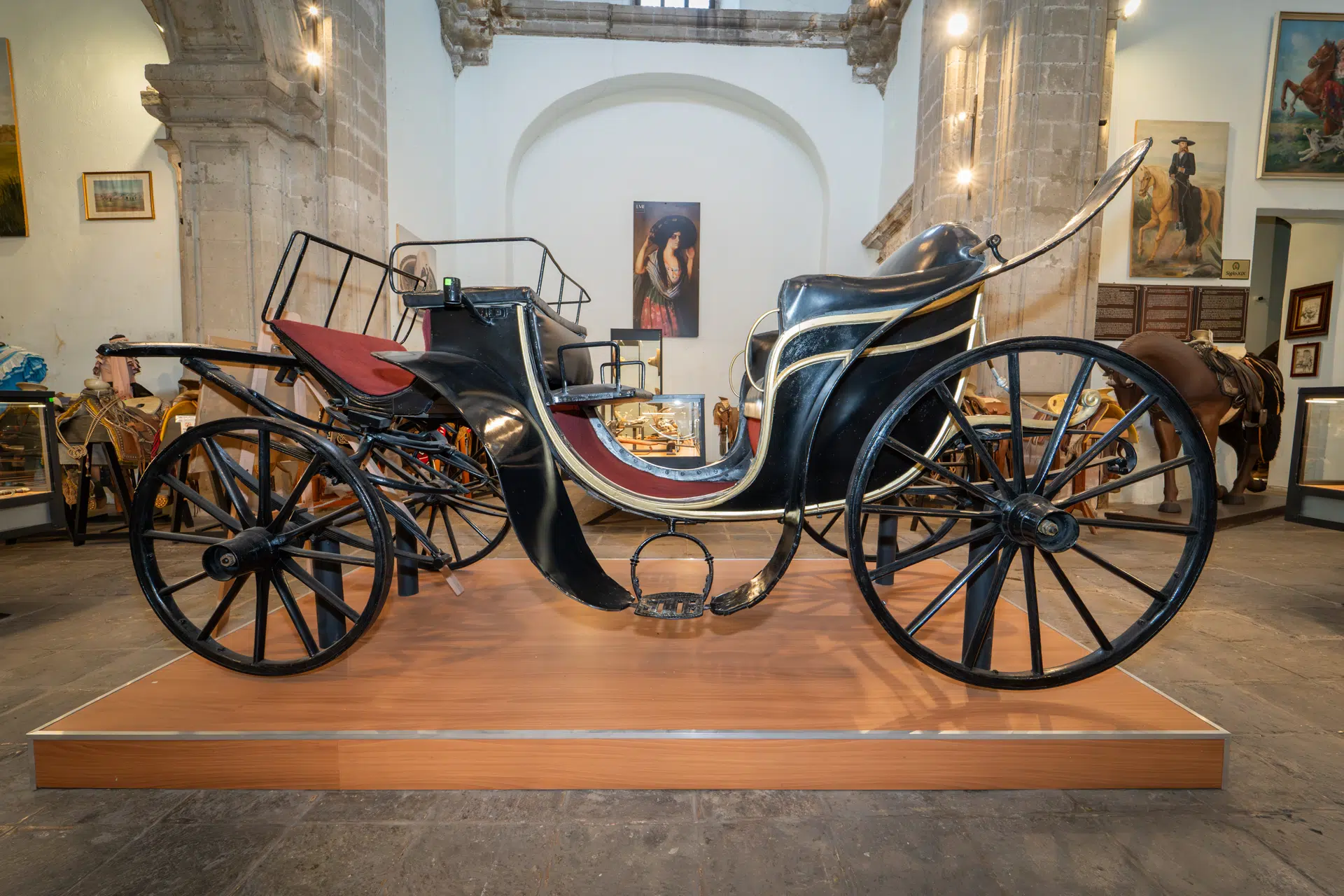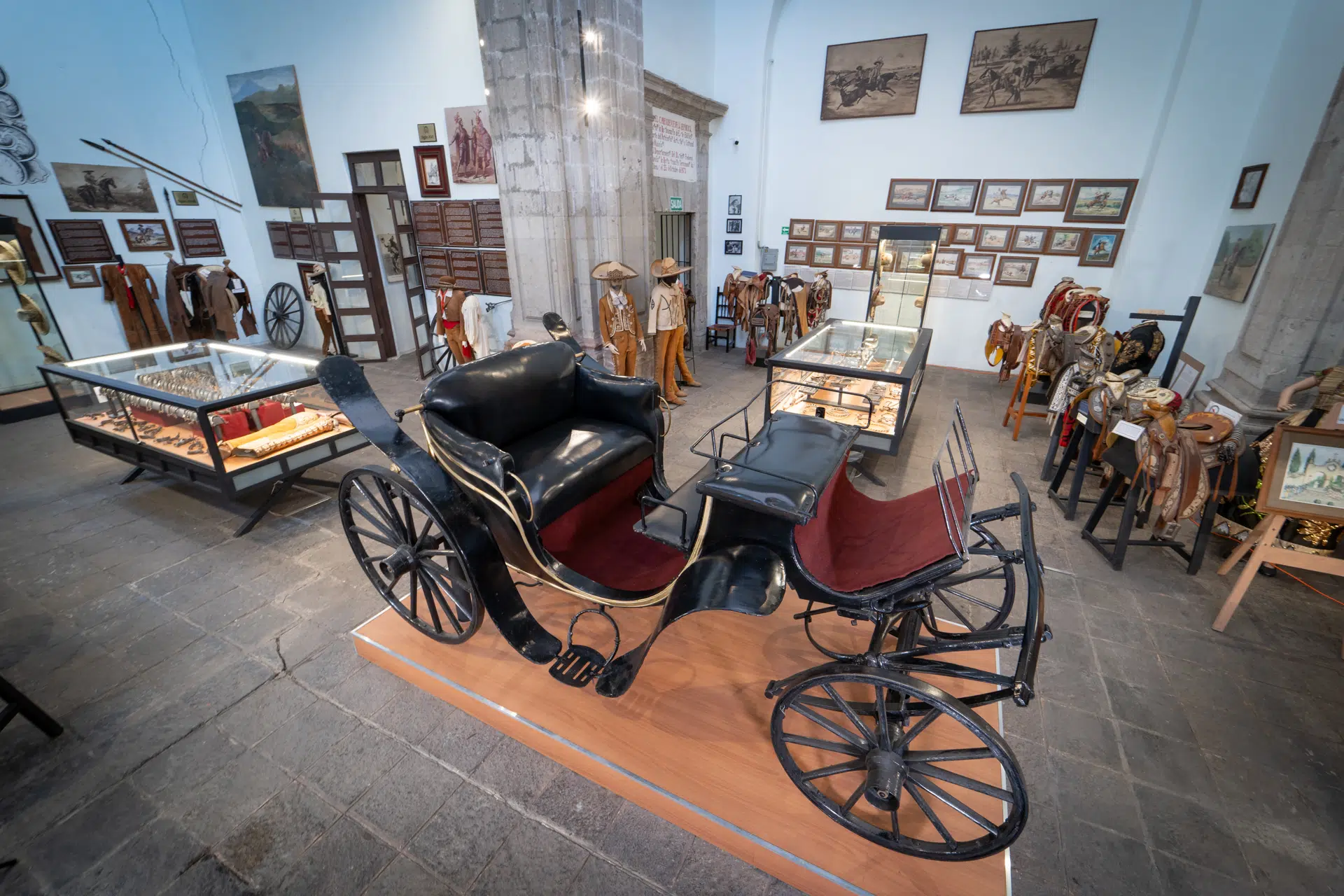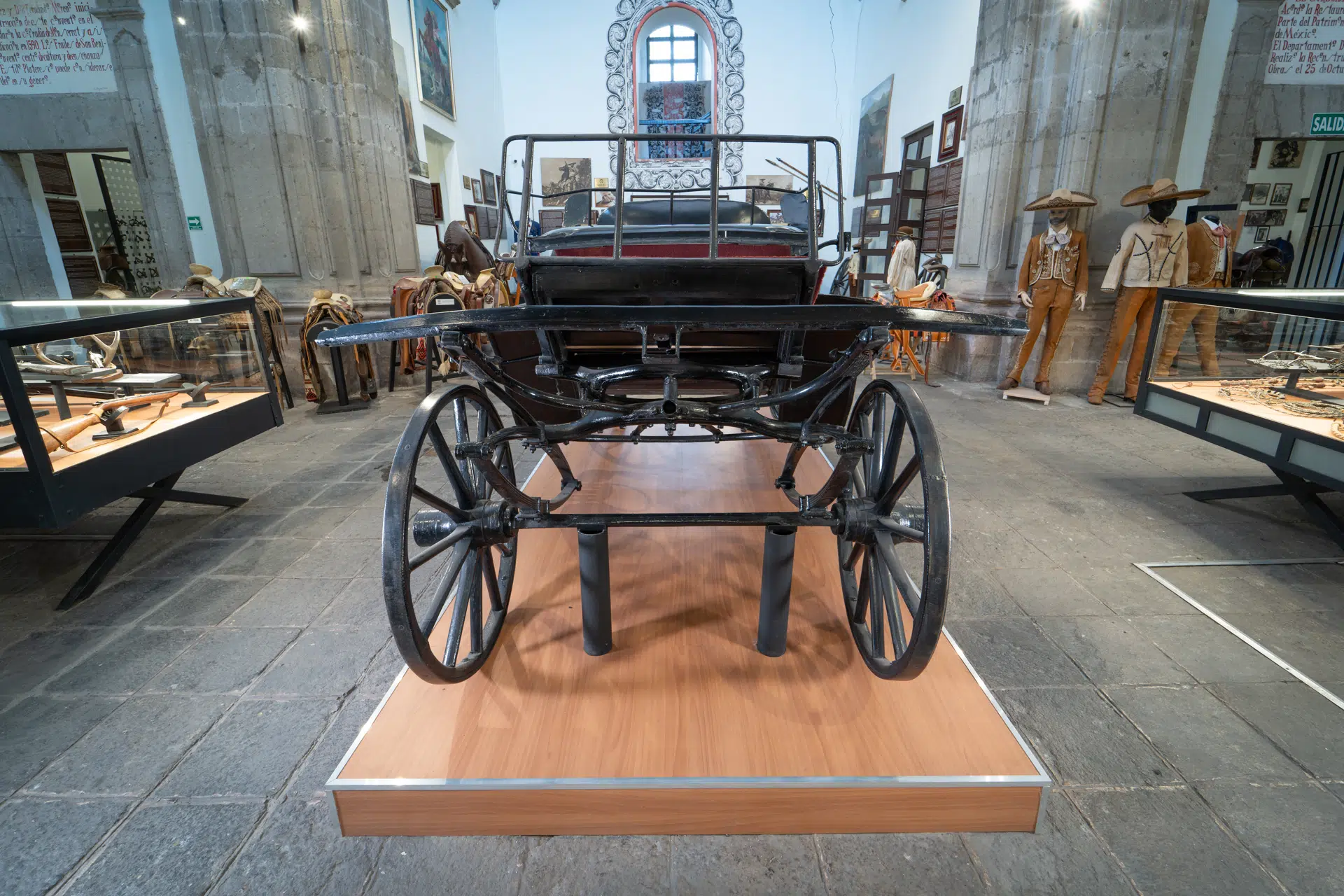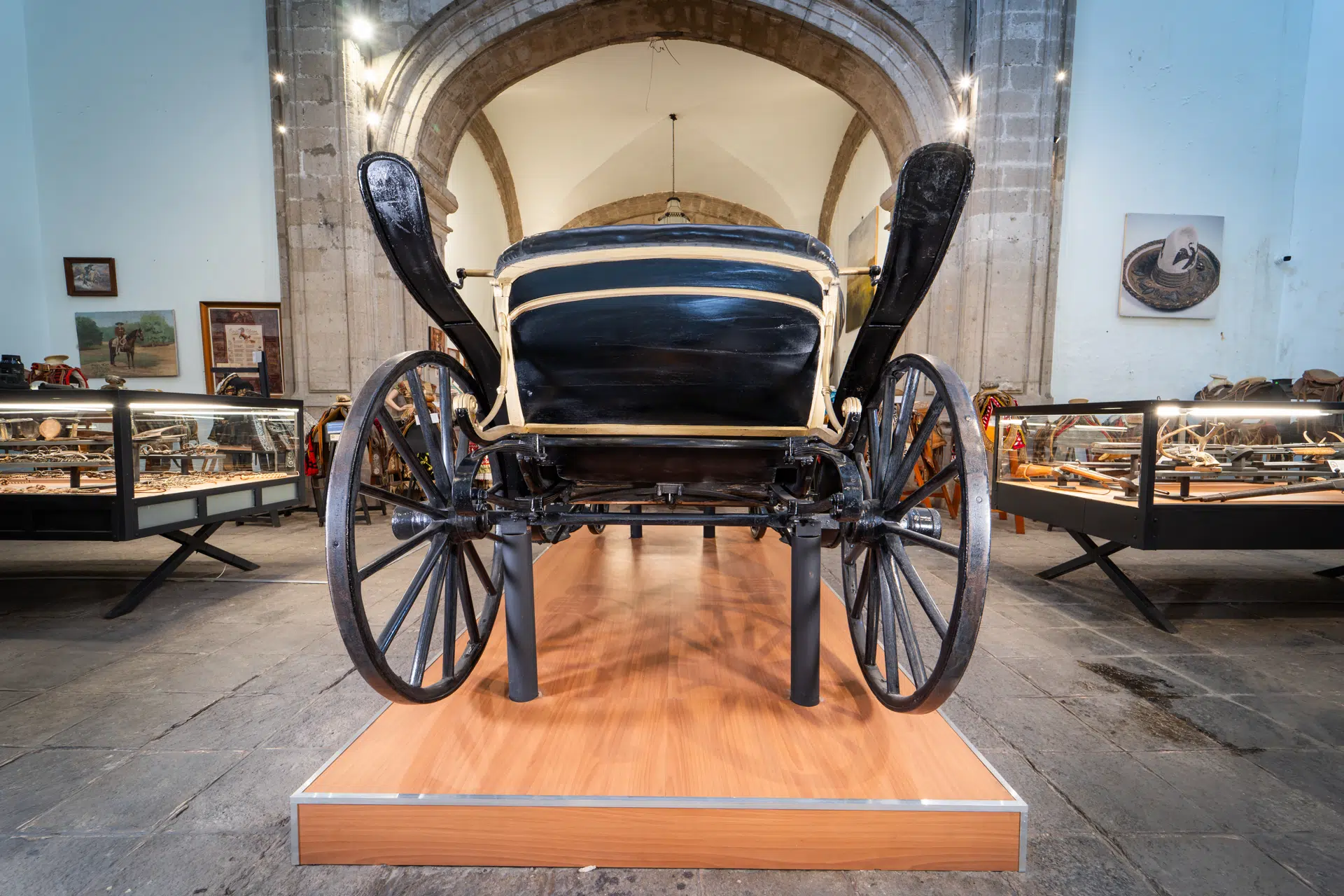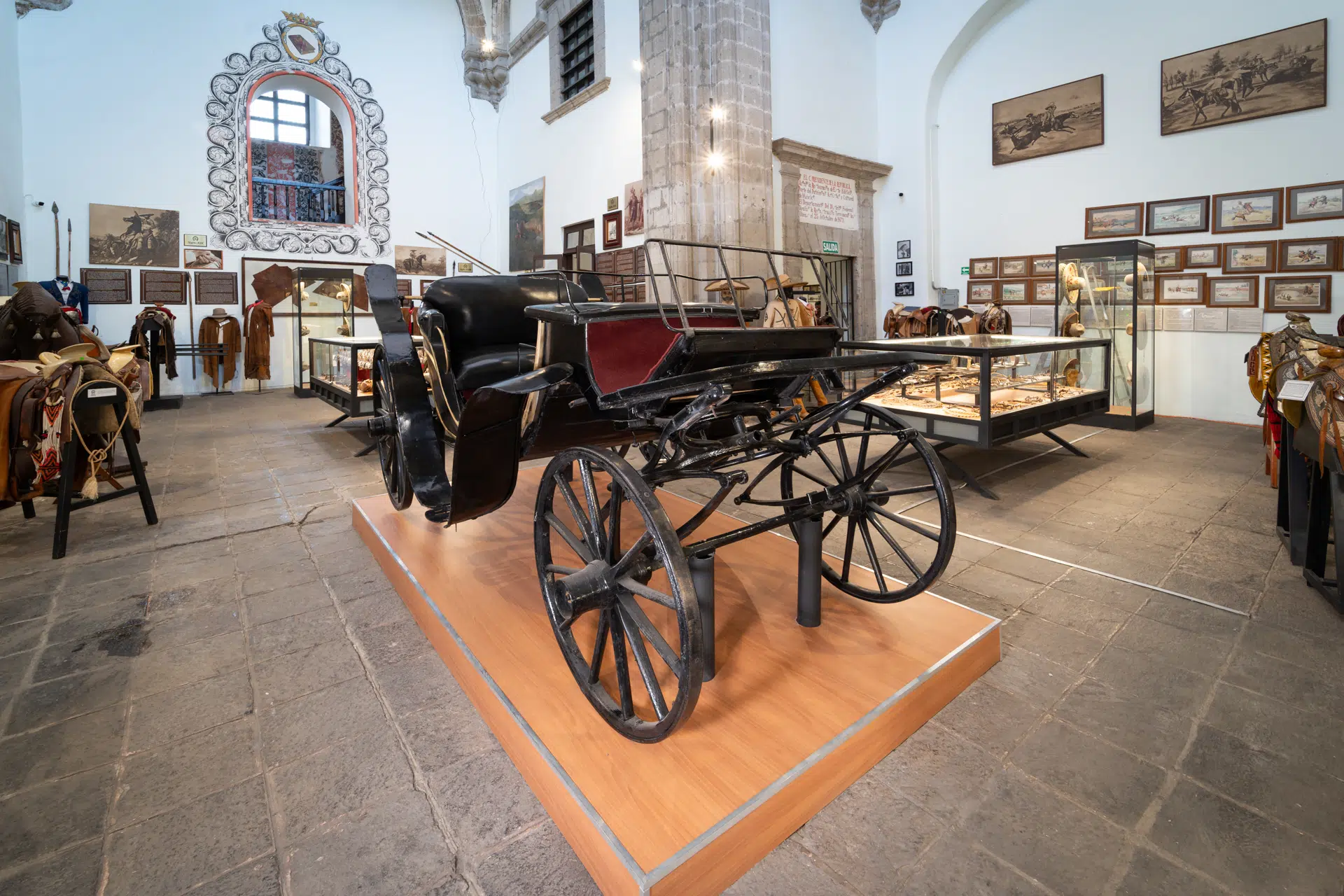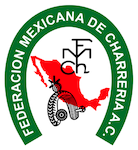ENCLOSURE
EX CONVENT OF OUR LADY OF MONSERRAT
The Charreria Museum is located on the corner of Isabela Católica and Izazaga, in the Downtown of Mexico City, in the Ex Convent of Our Lady of Monserrat, which holds significant historical origin and relevance
HISTORY
16th Century
The Ex-Convent of Our Lady of Monserrat was founded between 1587 and 1590 with the image of the Virgin brought from Spain.
In the year 1580, two wealthy Spaniards, Diego Jimenez and Fernando Moreno, were in this city. As they had no succession, and were very devoted to Our Lady of Montserrat of Catalonia, they used part of their wealth to order to bring from Spain a carved image of the Blessed Virgin, equal to the original in size and even in color. To expand and establish the public worship of their beloved patroness, they agreed to leave her as heir to all their property, building a decent church and chapel, endowed with sufficient funds for the maintenance of chaplains and other pious works. At this time, a great epidemic occurred that caused horrible ravages; and seeing the lack of a hospital to assist the Indians, those pious men determined to raise one to help that need. To that effect, they founded one in the Lomas de Santa Fe, a short distance from Tacubaya, where it seems that now exists the Molino de Belen, as the healthiest and most opportune place for the cure of the sick, and at the same time they thought of adding to the hospital the chapel that they were trying to build to Our Lady of Monserrat.
With the example of the two aforementioned subjects, other devotees came and resolved to establish a brotherhood, to which end they obtained a bull from His Holiness Gregory XIII, on March 30, 1584, with all the graces and privileges enjoyed by that of Catalonia. With this they began with more ardor the factory, and they came up with the idea, after the epidemic ended, to convert that building into a Benedictine monastery.
17th Century
In 1614, the first Benedictine priests, Diego Sánchez and Juan Victoria, arrived and the complex became a school. During this century, the former convent was used as an educational institution and the cloister functioned as an apothecary where medicines were made for the sick.
18th Century
The former convent was occupied by the Hieronymite Nuns, who provided religious education and copied manuscripts. During this century, documentary information about the former convent is unknown.
19th Century
In 1821, the closure of the former convent was ordered. In 1861, the church was allowed to reopen for Catholic worship, and the following year it was ordered that the convent building be divided into lots to be distributed among several families. However, this order was not fulfilled and the image of the Virgin of Monserrat was moved to another church.
20th Century
The former convent suffered the widening of Izazaga Avenue and was affected by changes in its surroundings. In 1931, it was declared a Colonial Monument, but the following year it was closed to public worship due to religious conflicts. During this century, the building had different uses, such as barracks for soldiers and house of the Socialist Federation of Workers.

In 1970, the former convent was acquired by the Department of Tourism and remodeling work began. In 1973, the chapel was donated to the National Federation of Charros and became the Charrería Museum, known as "El Palacio de la Charrería". During this same period, the National Lottery for Public Assistance allocated resources for the completion of the remodeling program of the museum, with the objective of preserving the culture and tradition of Mexico.
The Former Convent of Our Lady of Monserrat, currently home to the Charrería Museum, has witnessed several historical events over the centuries, and is an important cultural symbol of Mexico.

